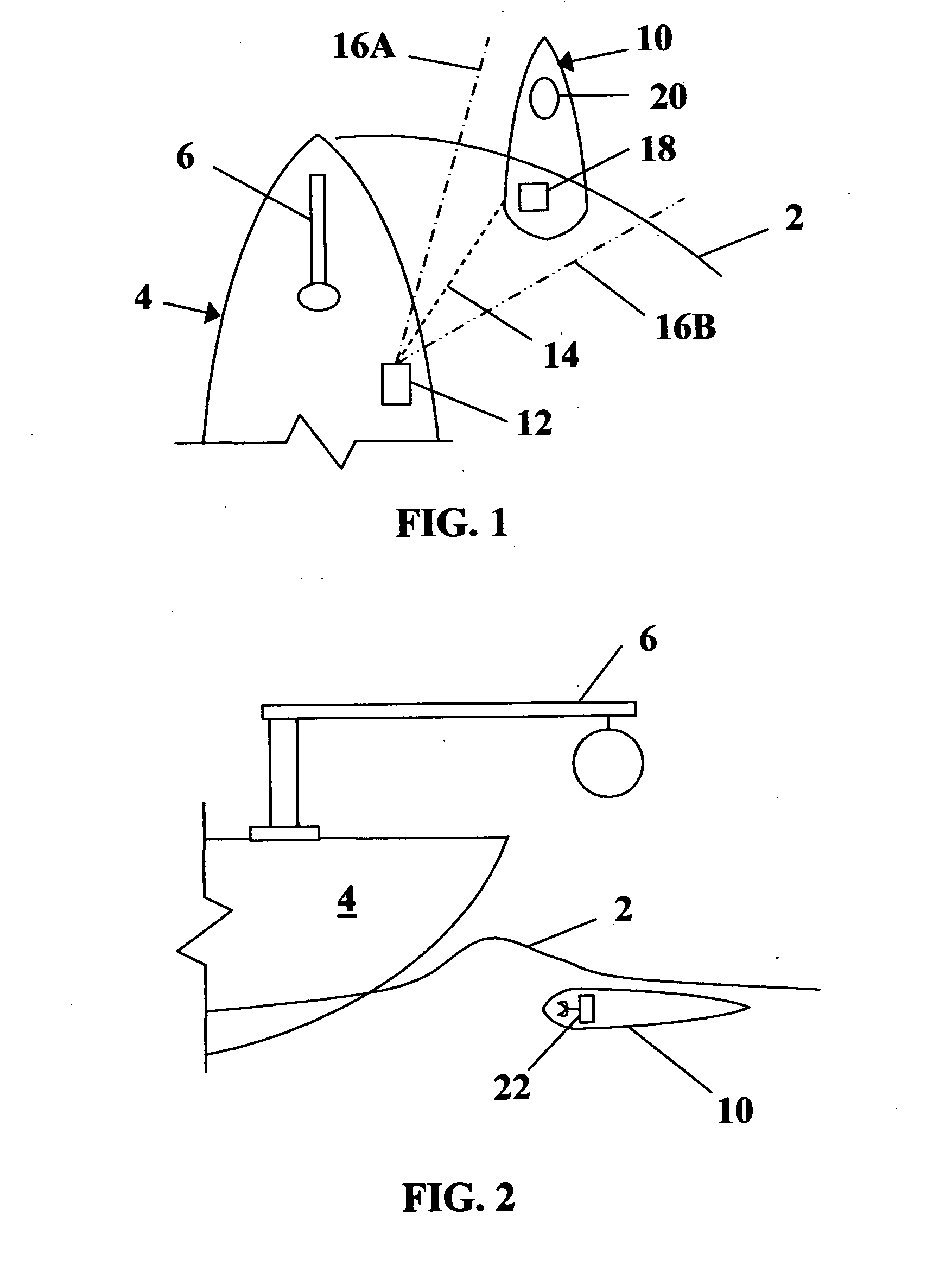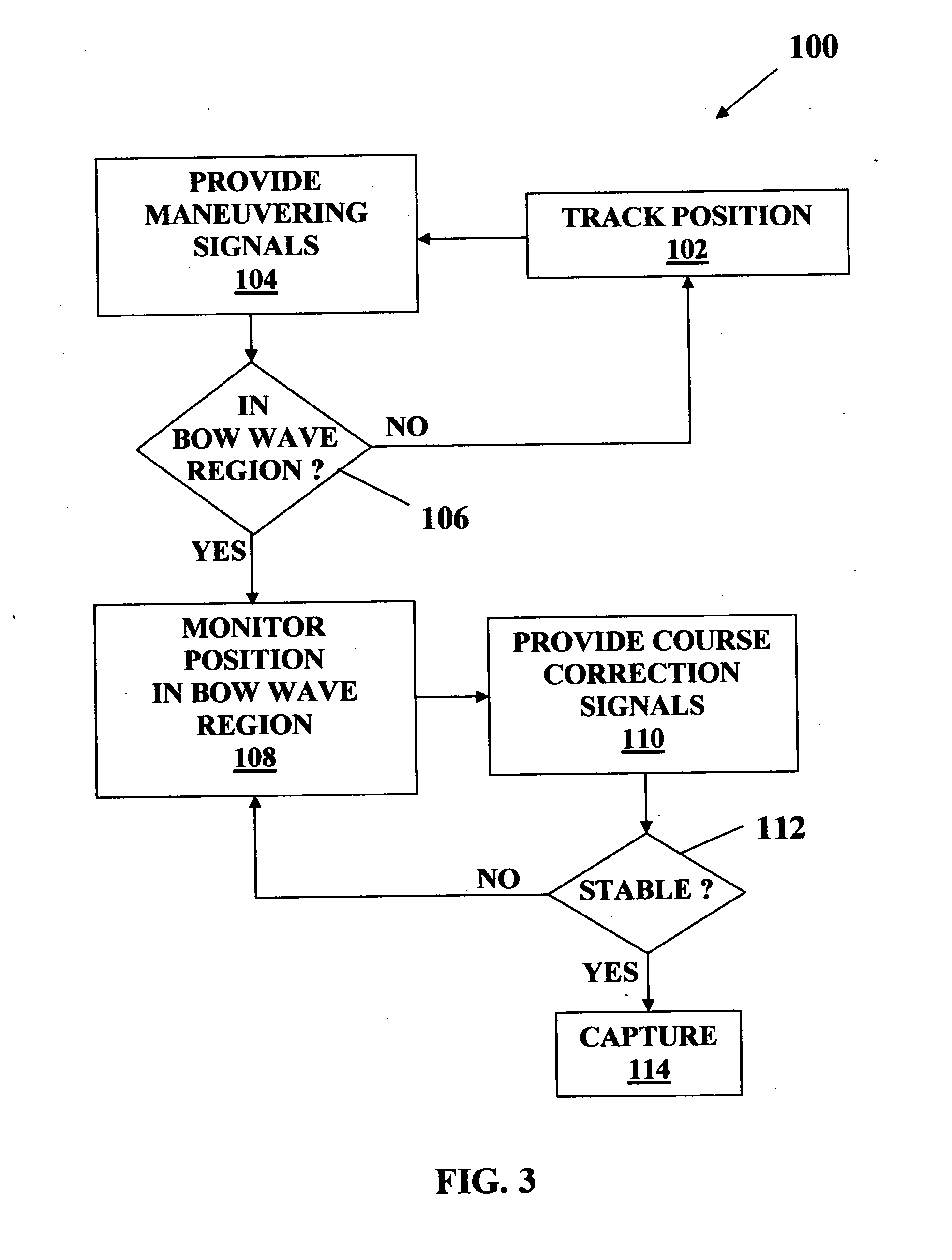Bow riding unmanned water-borne vehicle
a technology of unmanned vehicles and water-borne vehicles, which is applied in the direction of steering initiations, instruments, process and machine control, etc., can solve the problems of significant impact on large ship positioning and operations, manual launch and recovery techniques of large surface ships for these smaller unmanned systems, and unmanned vehicles can weigh up to several thousand pounds. , to achieve the effect of lessening the relative motion
- Summary
- Abstract
- Description
- Claims
- Application Information
AI Technical Summary
Benefits of technology
Problems solved by technology
Method used
Image
Examples
Embodiment Construction
[0032]Referring now to the drawings in detail wherein like numerals indicate like elements throughout the several views,in FIG. 1, UWBV 10 is illustrated riding in bow wave 2 of ship 4. For clarity, only one side of the bow wave 2 is illustrated in FIG. 1. The concept of the UWBV 10 riding the bow wave 2 is akin to the behavior of some species of dolphin that ride the bow waves of ships.
[0033]As is known in the art, a transiting ship creates a bow wave that generates a high pressure region. Dolphins (or porpoises) entering the bow wave region are propelled forward by the pressure gradient. For ease of depiction and description, but not limitation, this high pressure region is illustrated in FIG. 1 and is referred to herein alternately as the bow wave 2 or the bow wave region 2.
[0034]The phenomenon of bow riding occurs in small ships even when the bow wave is not visually apparent. The size of the bow wave region depends on the ship speed, size and hull design (e.g., a bulbous bow re...
PUM
 Login to View More
Login to View More Abstract
Description
Claims
Application Information
 Login to View More
Login to View More - R&D
- Intellectual Property
- Life Sciences
- Materials
- Tech Scout
- Unparalleled Data Quality
- Higher Quality Content
- 60% Fewer Hallucinations
Browse by: Latest US Patents, China's latest patents, Technical Efficacy Thesaurus, Application Domain, Technology Topic, Popular Technical Reports.
© 2025 PatSnap. All rights reserved.Legal|Privacy policy|Modern Slavery Act Transparency Statement|Sitemap|About US| Contact US: help@patsnap.com



